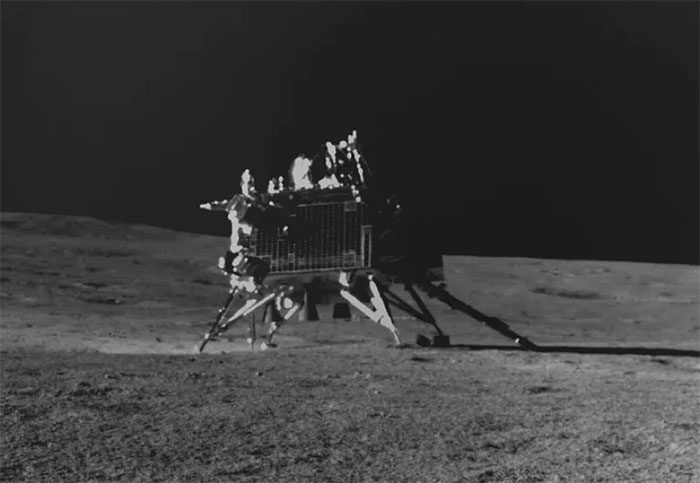After traversing more than 100 meters on the lunar surface and conducting several surveys, India’s Pragyan rover has safely gone into sleep mode.
The Chandrayaan-3 lunar lander and rover have successfully completed their mission objectives and have entered sleep mode.

India has successfully completed its landing and scientific research mission at the south pole of the Moon. (Image: ISRO).
In an announcement on September 4, the Indian Space Research Organisation (ISRO) stated that the Pragyan rover and Vikram lander of the Chandrayaan-3 mission have completed their two-week mission.
Both vehicles have also been placed in sleep mode, with their scientific instruments turned off due to depleted batteries.
The Chandrayaan-3 lander successfully touched down on the Moon on August 23, and the Pragyan rover departed from the Vikram lander on August 24.
Since then, the rover has traveled over 100 meters on the lunar surface, carrying out significant tasks such as analyzing the chemical composition of the lunar surface, mapping the thermal properties of the regolith, and conducting plasma measurements.
The scientific instruments onboard Chandrayaan-3 have also confirmed the presence of sulfur, iron, oxygen, and many other elements on the Moon.
It is expected that Pragyan and Vikram will reactivate on September 22, coinciding with the next sunrise phase in the Moon’s dark half.
ISRO hopes to successfully “wake up” the two vehicles to continue their extraordinary journey. However, there is a possibility that this may not be achievable.

Scientists suggest that water may be found in the shadowed areas of the Moon in the form of permanent ice. (Image: NASA).
According to Space, the lunar lander landing in the south polar region must withstand extremely harsh temperatures, in addition to needing supplemental power due to a lack of sunlight.
Unlike the Luna-25 lander, Pragyan and Vikram are not equipped with protective layers against the extremely low temperatures in this region. As a result, some scientific instruments may suffer permanent damage and may not operate again.
“If they cannot wake up, the Chandrayaan-3 lander will remain there as India’s lunar ambassador,” ISRO stated in a declaration. Nevertheless, the mission has been praised by the media as one of the “greatest scientific achievements” of India.
Landing on the Moon has always been a challenging endeavor. To date, only four countries— the United States, the Soviet Union, China, and India—have achieved this feat.
India previously attempted a lunar landing in 2019 with the Chandrayaan-2 mission, the predecessor of Chandrayaan-3. However, the Chandrayaan-2 lander crashed due to a software malfunction.
Earlier this year, the Hakuto-R spacecraft from the Japanese company ispace also crashed into the lunar crater during its landing attempt. Just three days before the successful landing of Chandrayaan-3, Russia’s Luna-25 mission encountered problems and crashed into the lunar surface.




















































